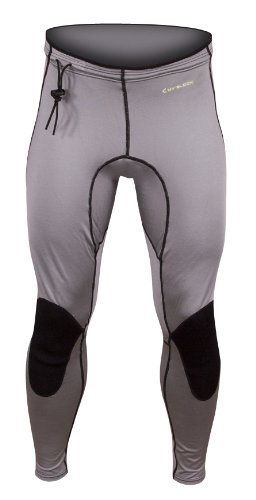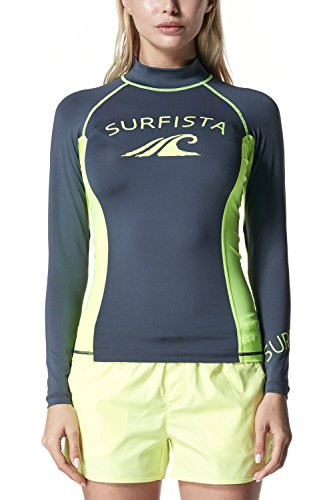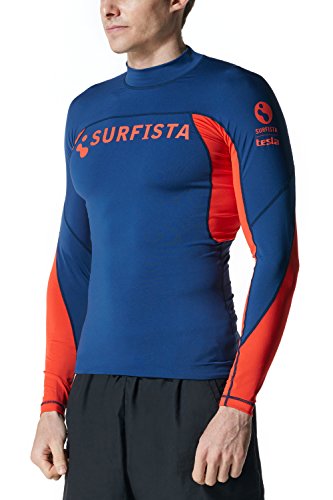SUPreme Contour Polyolefin Pants – (Gray, XL – Standup Paddleboarding, Kayaking & Water Sports)
The Supreme Platinum Polyolefin contour pants are designed for the paddle enthusiast. As the name implies these pants “contour” your lower body with Supreme’s exclusive Platinum Polyolefin. These breathable and fast-drying pants feature Duratex knee pads and flatlock stitching to hold up in the most demanding conditions, while at the same time provide great flexibility and comfort.
Product Features
- Duratex 4-way stretch knee pads
- Micro fleece interior and flat lock construction
- Extended hi back waist for maximum coverage
- Barrel lock drawstring waist
- CONSTRUCTION: Durable and non-chafing Flatlock stitching.
- STYLE: Designed for SUP enthusiasts to stay on the water in cold air/water conditions.
- COMFORT: Ergonomic paddle specific pattern and fit with a soft Micro-fleece interior.
- ULTRA FLEXIBLE FOR MAX MOBILITY: Designed to take advantage of body movements to keep you warm and comfortable during the repetitive motion of paddling.
- PROTECTION: Duratex knee pads, 50+ UV Shield.
TM-WT71-DGTZ_Small Tesla Surfista Women’s UPF 50+ Long Sleeve Athletic Rashguard WT71
Surfista Rashguard
Tesla’s surf and water sports rash guard lineup
Twisted design pattern that adapts to surfer’s movements
Excellent skin flap pin curls for a compression fit
Design
Twisted 3-D design patterns that adjusts according to the motion trajectory of a swimmers arms and upper body that optimizes swimming and surfing
Long shirt length design for a snug fit that prevents ride-ups
Pristine detail design and flat-lock stitching
Functional Fabric Material
High-density fabric that protects your skin from outsize hazards and harmful UV rays
Enhanced elasticity and resilience for flexible movements
Quick dry and water wicking for maintaining the best of conditions inside and outside of the water
Product Features
- Tesla’s original Rashguard lineup designed specifically for Water sports and Surfing
- 88% Polyester – 12% Polyurethane
- Durable high-density fabric that protects against rashes, abrasions, and harmful UV Rays (UPF 50+)
- Twisted 3-D patterns along with pristine detail design and flat-lock stitching
- Moisture Sensing/Quick time Dry/TWO-WAY Air Circulation.
► Surfing : Webber Wave Pool looped linear | HD1080p | ►
The Ultimate Resource for Surf Park, Wave Pool, and Artificial Wave Technology News.
Webber Wave Pools
webber wave pools tassie and clarence
Webber Wave Pools – Surf Park Summit Presentation
Webber Wave Pools
Webber Wave Pools will imitate natural swell
The company founded by Greg Webber published a video titled _Looped Linear,_ in which we understand the whole behaviour of the wave, and the possibilities for the surfer in each ride.
Reblogged 8 years ago from www.youtube.comTM-T71-NVO_Large Tesla Surfista Men’s UPF 50+ Long Sleeve Crew Athletic Fit Rashguard T71
Surfista Rashguard
Tesla’s surf and water sports rash guard lineup
Twisted design pattern that adapts to surfer’s movements
Excellent skin flap pin curls for a compression fit
Design
Twisted 3-D design patterns that adjusts according to the motion trajectory of a swimmers arms and upper body that optimizes swimming and surfing
Long shirt length design for a snug fit that prevents ride-ups
Pristine detail design and flat-lock stitching
Functional Fabric Material
High-density fabric that protects your skin from outsize hazards and harmful UV rays
Enhanced elasticity and resilience for flexible movements
Quick dry and water wicking for maintaining the best of conditions inside and outside of the water
Epic Gear Golf Kiteboard Bag Small 146 x 34 x 38 (cm) Kiteboard Bag, Kiteboarding Bag, Kiteboarding, Board Bag
This bag will fit up to two boards and three kites. Great for traveling and just getting all the gear to and from the beach.
Product Features
- Model: Golf Bag Smal
- Length: 146






